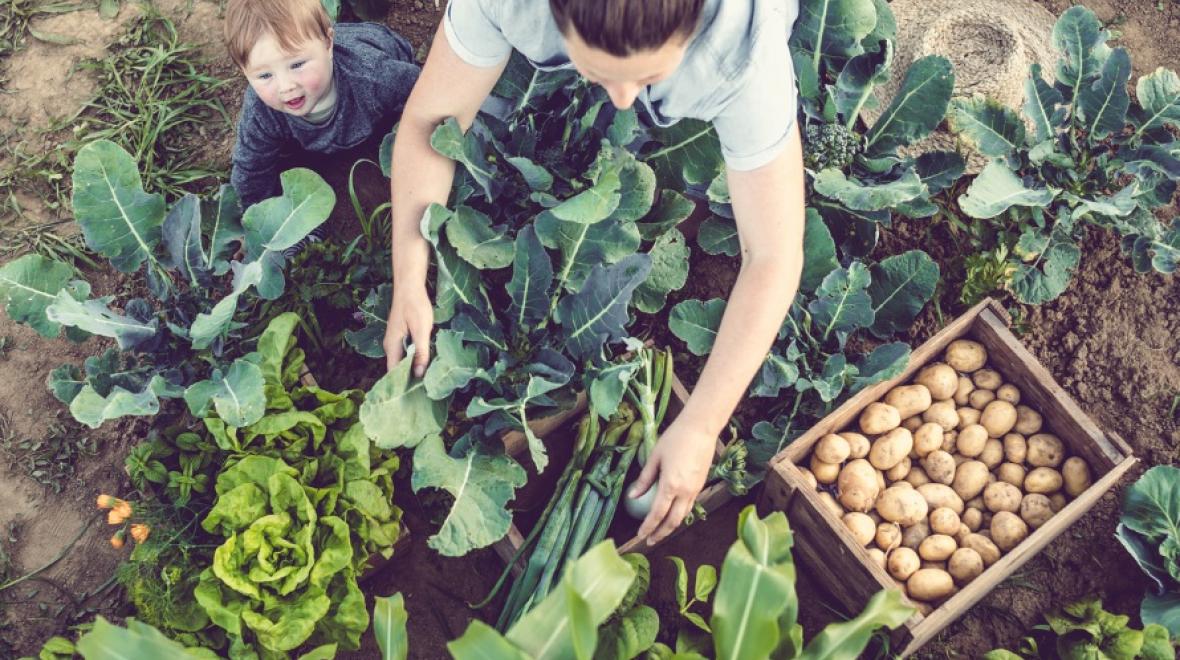
Getting little kids interested in gardening in summer is easy to do — most kids love playing in the dirt and sticking seeds into the soil.
But when the fall comes, it’s harder to motivate everyone to get outside. Many families give up on growing veggies after the summer but there’s still time to do one last veggie garden project and keep the kids interested in growing their own food.
As the weather is getting a bit cooler, leafy greens are a good veggie to start with. By nature, leafy greens require less direct sunlight, prefer it when it’s a bit cooler and can be grown in either a garden bed or a smaller container. Most greens germinate quickly and many can be found as starts.
If seeds don’t germinate within a week of sowing, plant a few more and be sure to keep the soil surface damp in the event of several sunny days. Having kids monitor the plot before school and in the evening before bed makes for a fun evening wind down for the whole family.
What to plant in early fall (September to mid-October)

1. Lettuce
Lettuces come in assorted sizes and colors and will make a great addition to your salad bowl. Be sure to choose varieties that will do well late in the season — chicories, escaroles and endives are good choices.
Have children break apart individual plants — the start trays typically have 3 or 4 lettuce plants in each block. To start from seed, try Green Deer Tongue, which has dark green, spiked leaves or Arctic King — a butterhead for anyone wanting a more traditional green lettuce leaf.
Children can run their finger down the soil, drawing a line of any shape and dimension, and then drop in one seed every inch or so. Make a game of it and break out of the habit of trying to grow in straight lines.
2. Arugula
Arugula is essentially a loose-leaf lettuce with has a distinctive peppery, spicy taste. Plant arugula through mid-October by sowing seeds thickly as each seed produces one stem with multiple leaves.
Arugula is best broadcast sown — the process of sprinkling seeds across a swath of soil. This type of sowing is an excellent option for younger kids because they get to toss seeds around without being strictly organized. Cover them lightly with soil and they should germinate within a week.
3. Spinach
Spinach can be planted and treated much as you would lettuce, and there is still time to plant seeds. Spinach seeds are bigger than lettuce and arugula seeds so they make a good project for younger children who don’t have the dexterity to handle tiny seeds.
Fold baby spinach into morning eggs — an easy way to tie gardening to eating and remind everyone that food is growing in the yard.
4. Kale
You can plant kale, traditional mustard greens and chard as starts through mid-October, though they won’t put on much growth before winter sets in. They will, however, overwinter well enough, particularly if you mulch around the base of the plants. Choose any variety you wish and plant immediately. Around Halloween, get kids back in the garden by having them mulch with a layer of hay, "tucking in" each plant and offering a blanket of protection.
5. Mustard Greens
Ruby Streaks mustard greens are sharply pointed and have deeply veined purple-red leaves, so they make a fun, coloful plant for children. They are spicy in taste and can be eaten raw in salads or sautéed. They grow quickly and will withstand the cool of winter, making them a great choice for both fall and spring harvest, though the strong flavor may be off-putting to any children without a flexible palate.
All of these plants will benefit from a bit of winter protection in the form of mulch or a floating row cover, which children can cut and place over plants, just as you would a blanket. Let your kids nurture, and care for your plants all winter long, and they will be twice as excited to take on bigger gardening projects come spring.
Editor’s note: This article was originally published in October 2018, and updated in September 2022.











